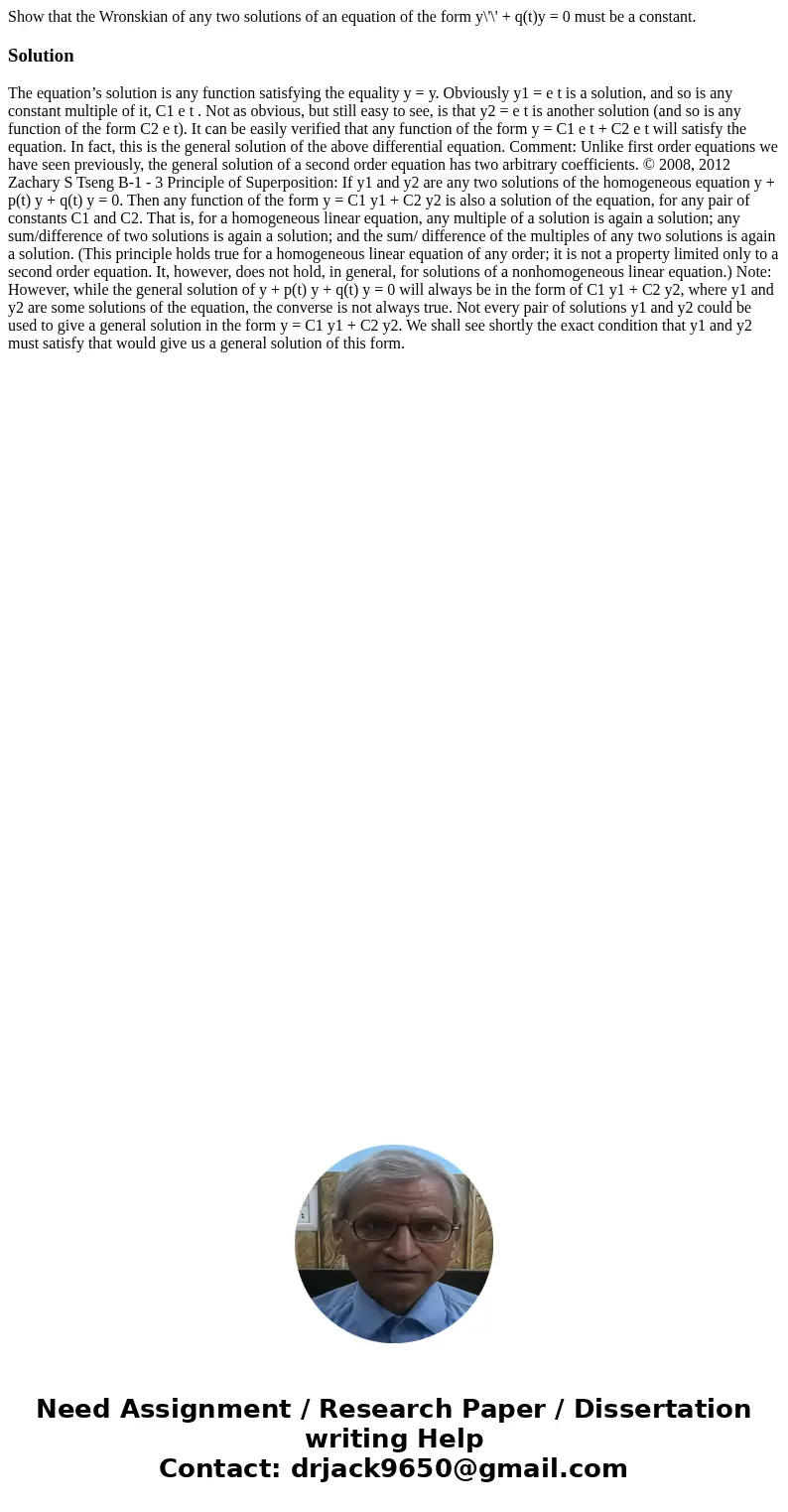Show that the Wronskian of any two solutions of an equation
Show that the Wronskian of any two solutions of an equation of the form y\'\' + q(t)y = 0 must be a constant.
Solution
The equation’s solution is any function satisfying the equality y = y. Obviously y1 = e t is a solution, and so is any constant multiple of it, C1 e t . Not as obvious, but still easy to see, is that y2 = e t is another solution (and so is any function of the form C2 e t). It can be easily verified that any function of the form y = C1 e t + C2 e t will satisfy the equation. In fact, this is the general solution of the above differential equation. Comment: Unlike first order equations we have seen previously, the general solution of a second order equation has two arbitrary coefficients. © 2008, 2012 Zachary S Tseng B-1 - 3 Principle of Superposition: If y1 and y2 are any two solutions of the homogeneous equation y + p(t) y + q(t) y = 0. Then any function of the form y = C1 y1 + C2 y2 is also a solution of the equation, for any pair of constants C1 and C2. That is, for a homogeneous linear equation, any multiple of a solution is again a solution; any sum/difference of two solutions is again a solution; and the sum/ difference of the multiples of any two solutions is again a solution. (This principle holds true for a homogeneous linear equation of any order; it is not a property limited only to a second order equation. It, however, does not hold, in general, for solutions of a nonhomogeneous linear equation.) Note: However, while the general solution of y + p(t) y + q(t) y = 0 will always be in the form of C1 y1 + C2 y2, where y1 and y2 are some solutions of the equation, the converse is not always true. Not every pair of solutions y1 and y2 could be used to give a general solution in the form y = C1 y1 + C2 y2. We shall see shortly the exact condition that y1 and y2 must satisfy that would give us a general solution of this form.

 Homework Sourse
Homework Sourse